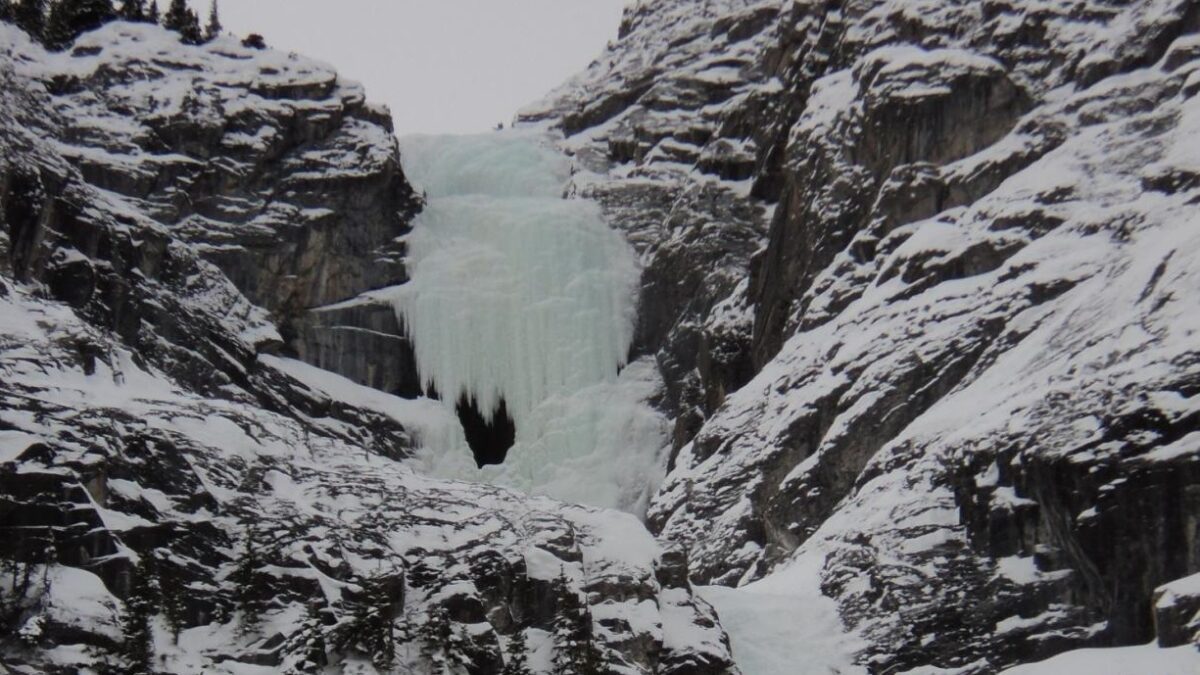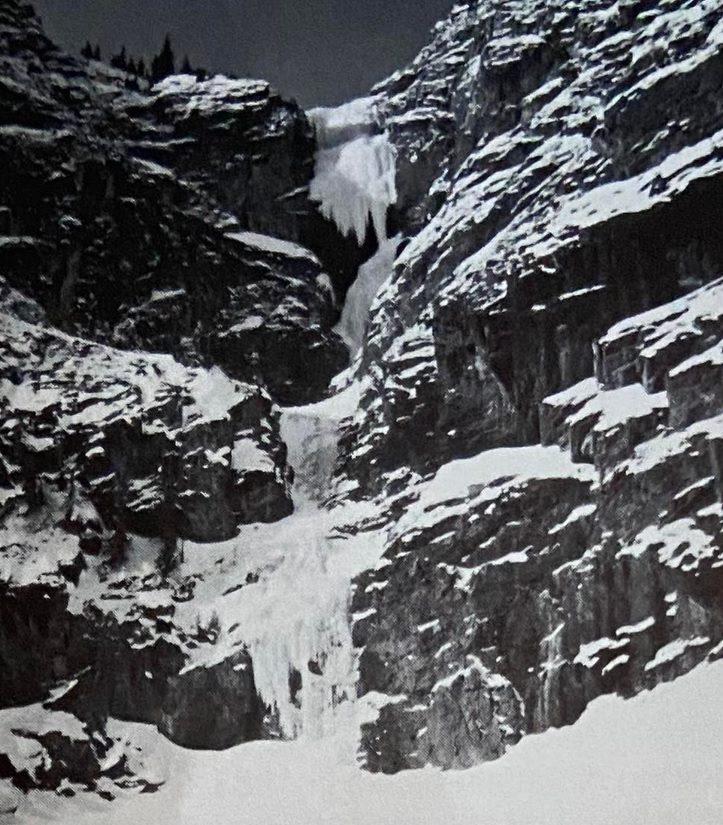Ice Climb Name Confusion, The Story of Spray River Falls
By the early 1980s, the route had several first ascents and two names

In the late 1970s, Rockies climbers John and Mary Lauchlan were skiing below the east ace of Sulphur Mountain in the Canadian Rockies when they spotted an unclimbed ice route. They returned a few days later to make the first ascent of a route that they called Spray River Falls, a 170-metre WI5. Lauchlan shared the news with his friends at the Calgary Mountain Club, but word spread slowly back then, so few outside the club knew about the first ascent.
By this time, ice climbing in western Canada was in full swing with many of the biggest routes, like Weeping Wall and Nemesis, having been climbed. Lauchlan was in his prime, having made the first ascents of ice climbs like Pilsner Pillar WI6, Carlsberg Column WI5, Takakkaw Falls WI4 (solo) and The Professor Falls WI4. He was a few seasons away from joining forces with his regular partner Jim Elzinga to make the first ascent of Slipstream, a 900-metre WI4 on Snowdome on the Columbia Icefield.
In 1983, Al Dunham and Frank Campbell climbed Spray River Falls, not knowing the Lauchlans had made the first ascent and thinking a team from Europe had. Dunham wrote about it in the 1984 Canadian Alpine Journal, saying, “The first ascent party (1982) was from France thus the climb has not been reported. I will refer to the climb as Selenium Falls. It is quite similar to Louise Falls but a little more demanding.” Selenium is the name of the peak east of Sulphur Mountain near where the falls is found.
There was now a group of climbers who called the climb Spray River Falls and a group that called it Selenium Falls. To this day, the climb is known by both names. While Selenium Falls might make more sense because the climb is not directly on the Spray River, the original name was Spray River Falls. Lauchlan died soloing Polar Circus in 1982.



